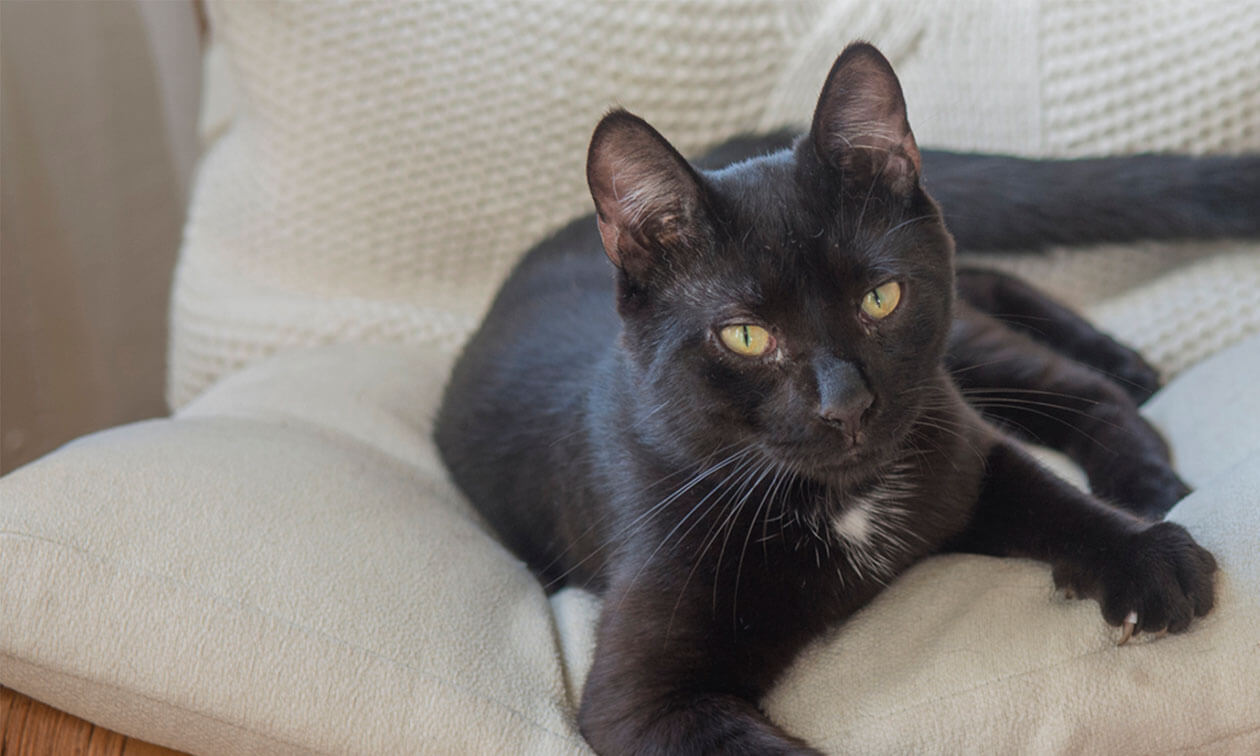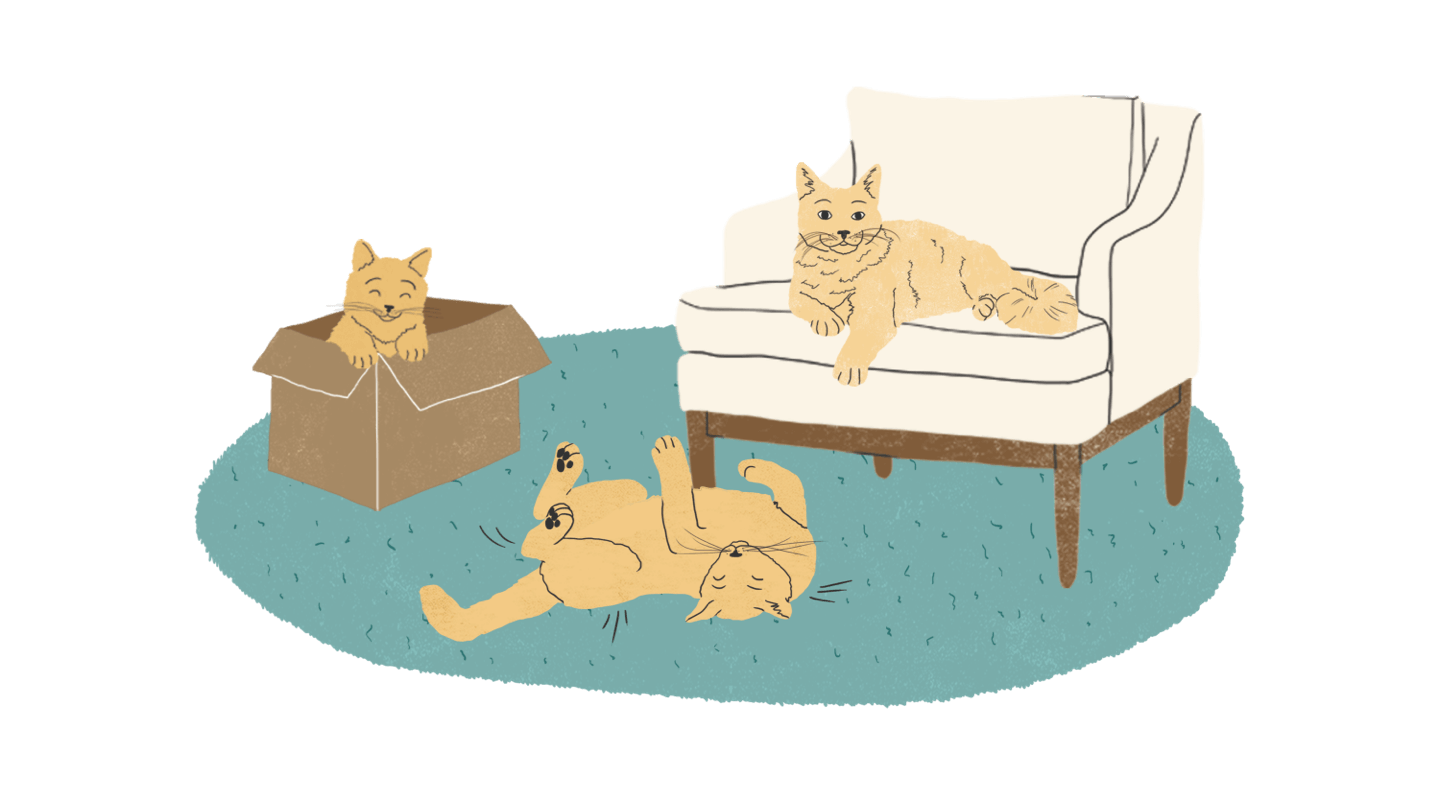Cats have lived with humans for approximately 10,000 years, giving us ample time to observe how long they mature, start creating kittens, and live out their lives. In recent years, advances in veterinary medicine and more cats living indoors have helped to increase the average lifespan of cats to 11-14 years,1 but some cats live 20 years or longer.
So how does your cat’s age relate to your age? Do you know what kinds of things impact your cat’s lifespan and how you can keep them around as long as possible? Let’s break down your cat’s age.
How To Convert Cat Years to Human Years
Here is how you can loosely map out your cat’s age in human years:
- The first cat year lasts approximately 15 human years.
- A six-month-old cat is approximately 10 human years old.
- The second year lasts about nine human years.
- A two-year-old cat would be about 24 human years old (15 for the first year and 9 for the second year).
- After this, the conversion is much easier, as each cat year adds about four human years.
- For example, a two-year-old cat starts at 24 human years old.
Every cat is different, so converting their age into human years isn’t an exact science, but it’s helpful to have a general idea of how your cat’s age relates to yours. This can also help you understand the physical and mental changes your cat goes through and bring to life how dramatically different their development is compared to ours.
Newborn to Adult Cat at Warp Speed
The first two years of a cat’s life are a time of rapid growth. A kitten transforms from a newborn to being capable of having kittens of her own at approximately six months of age (which is about 10 years old in human years).
From six months to two years, they’re considered “junior” (acting a lot like high-energy teenagers).
Cats reach adulthood at approximately three years old. At 10 years old, a cat is considered a senior. That means many cats live half their life or more as seniors, making senior health care a big priority.
What Is the Average Lifespan of a Cat?
Even though cats generally mature at about the same rate and have a lifespan of up to 20 years, a number of factors affect this lifespan.
Breed
Many domestic cats are not purebred but a mix of many of breeds from years of crossbreeding. Any cat may carry an inherited trait or disorder, but purebreds have a smaller gene pool, making inherited disorders are more commonly found in purebred cats than mixed breeds.
Severe disorders, such as hypertrophic cardiomyopathy, heart disease, polycystic kidney disease, or pyruvate kinase deficiency, a red blood cell disorder, may shorten the life of an affected cat.
Spay and Neuter
Studies have shown that spayed and neutered cats have longer lifespans than their non-neutered counterparts.2 Specific benefits include reduced risk of asthma, improved dental health, decreased roaming in outdoor cats, reduced aggression toward other cats, and fewer bite wounds.
Spaying reduces the risk of mammary cancer and eliminates the possibility of a life-threatening uterine infection in female cats. Neutering eliminates the possibility of testicular cancer in male cats.
Environment
Cats who go outdoors can encounter more hazards than cats living indoors. Outdoor or indoor/outdoor cats have more exposure to infections, bite wounds, and accidents, such as being hit by a car. All of these can shorten a cat’s lifespan.
Diet and Body Weight
Good nutrition is essential and can change as your cat grows. Kittens grow best with a kitten diet with increased levels of calcium and phosphorus for their fast bone growth, omega fatty acids for eye and brain development, and protein for muscle and organ development.
As your cat ages, their diet should change. Most cats continue to need a high-protein diet, but watch for weight gain. Obesity can lead to health issues such as arthritis and diabetes mellitus. On the flip side, a very thin cat needs a vet check since thin cats may have an underlying medical issue such as inflammatory bowel disease, kidney disease, or hyperthyroidism. Cats below their ideal body weight have a shorter life expectancy than cats at a healthy weight1.
Dental/Body Connection
70% of cats have dental disease by 2 years of age.3 Dental infections have been associated with not only painful tooth loss but also decreased kidney function and insulin resistance, which can make your cat seriously ill. Discuss with your veterinarian what home dental care you can do and how often your cat should have a dental cleaning under anesthesia to keep their teeth clean. Your cat might have a dental issue if you notice bad breath, they’re hungry but reluctant to eat, or dropping food.
Regular Veterinary Check-Ups
Kittens are susceptible to infections, so frequent vet visits for their vaccine series and parasite control are essential. When kittens get sick, they get dehydrated or develop low blood sugar quickly. A lethargic kitten is always in need of an immediate vet visit. After kittenhood, annual check-ups suffice unless your vet suggests otherwise.
Starting in their senior years, around 10 years old, the American Association of Feline Practitioners recommends twice-yearly veterinary visits and lab testing for early detection of common health issues that affect senior cats, such as kidney disease, hyperthyroidism, diabetes mellitus, inflammatory bowel disease, or cancer. This can lead to a longer and better quality of life for your beloved cat.
ZPC-03832
1. Mathiew Montoya, et. al. Life expectancy tables for dogs and cats derived from clinical data. National Library of Medicine. 10: 1082102. 2023.
2. Church, D. B., McGreevy, P. D., Thomson, P. C., & Brodbelt, D. C. (2014). Longevity and mortality of cats attending primary care veterinary practices in England. Journal of Feline Medicine and Surgery. https://doi.org/10.1177/1098612X14536176
3. 2021 AAFP Feline Senior Care Guidelines. Sage Journals. https://journals.sagepub.com/doi/10.1177/1098612X211021538?url_ver=Z39.88-2003&rfr_id=ori:rid:crossref.org&rfr_dat=cr_pub%20%200pubmed. Accessed December 21, 2023.



